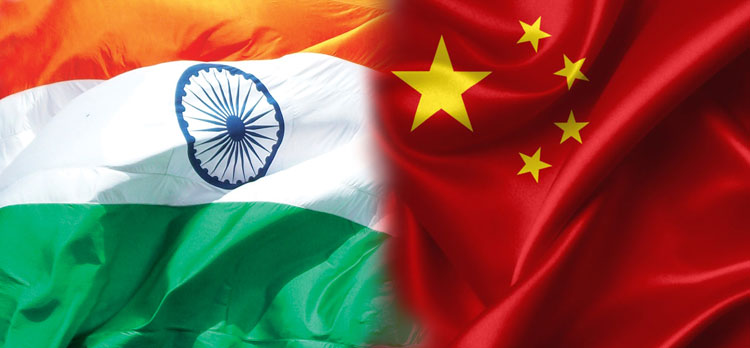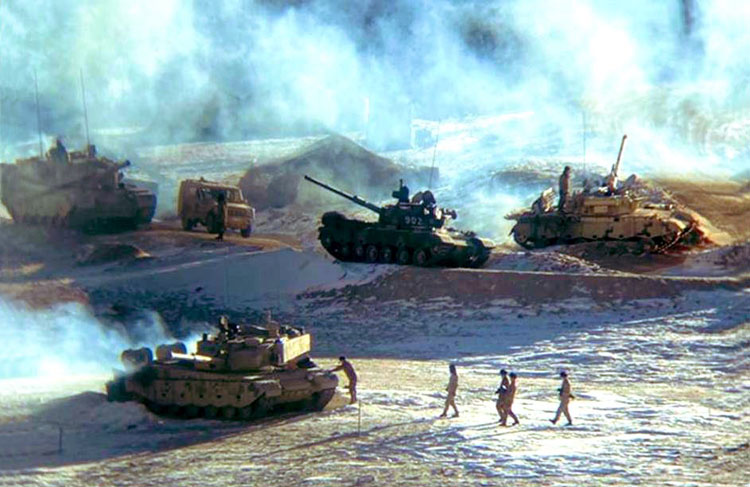INDIAN ARMED FORCES CHIEFS ON OUR RELENTLESS AND FOCUSED PUBLISHING EFFORTS

The insightful articles, inspiring narrations and analytical perspectives presented by the Editorial Team, establish an alluring connect with the reader. My compliments and best wishes to SP Guide Publications.

"Over the past 60 years, the growth of SP Guide Publications has mirrored the rising stature of Indian Navy. Its well-researched and informative magazines on Defence and Aerospace sector have served to shape an educated opinion of our military personnel, policy makers and the public alike. I wish SP's Publication team continued success, fair winds and following seas in all future endeavour!"

Since, its inception in 1964, SP Guide Publications has consistently demonstrated commitment to high-quality journalism in the aerospace and defence sectors, earning a well-deserved reputation as Asia's largest media house in this domain. I wish SP Guide Publications continued success in its pursuit of excellence.
- Operation Sindoor: Resolute yet Restrained
- India’s Operation Sindoor Sends a Clear Message to Terror and the World – ‘ZERO TOLERANCE’
- Japan and India set forth a defence cooperation consultancy framework, talks on tank and jet engines
- Terrorist Attack in Pahalgam in Kashmir: Unfolding a long surgical war against PAK
- Lt General Pratik Sharma takes over Command of Indian Army's Northern Command
14th Corps Commander-level Talks
The 14th round India-China Corps Commander Level Meeting was held at Chushul-Moldo border meeting point on the Chinese side on January 12, 2022 with representatives from the defence and foreign affairs establishments of both sides present at the meeting
 |
The Author is Former Director General of Information Systems and A Special Forces Veteran, Indian Army |

The 13-hour long 14th Corps Commander Level talks between the Indian Army and the Chinese PLA held in Eastern Ladakh on January 12, 2022, were inclusive. A ‘damp squib’ would be a more accurate, though blunt description. India had been seeking this meeting since long while China took its own sweet time to agree to it.
The 13th Corps Commander Level meeting that took place on October 21, 2021, too had ended in a stalemate. In that meeting the Indian Army had said that the “constructive suggestions” it made were not agreeable to the Chinese side, which also could not provide any “forward-looking” proposals. The Chinese later released a press statement calling India’s demands “unreasonable”. The bitter stalemate was reflected with China refusing to complete the stalled troop disengagement at Patrolling Point-15 (PP-15) in the Hot Springs-Gogra-Kongka La area. The Chinese side calling Indian demands “unreasonable” signaled a full stop to further disengagement because China had apparently already achieved more than what it wanted.
During the 14th round of talks, China again showed reluctance to complete troop disengagement at Gogra-Hot Springs while also refusing to discuss steps to defuse the bigger intrusions at Depsang and Demchok
Asked about the 14th Corps Commander Level round of talks to resolve the India-China standoff during a press briefing, Wang Wenbin, spokesman of China’s foreign ministry responded by saying, “Regarding the 14th round of China-India Corps Commander Level Meeting, we will release information in a timely manner if there is any.”
Our Ministry of External Affairs, however, issued a press statement on January 13 titled ‘Joint Press Release of the 14th round of India-China Corps Commander Level Meeting’, the text of which is as follows:
“The 14th round India-China Corps Commander Level Meeting was held at Chushul-Moldo border meeting point on the Chinese side on January 12, 2022. Representatives from the defence and foreign affairs establishments of the two sides were present at the meeting. The two sides had a frank and in-depth exchange of views for the resolution of the relevant issues along the LAC in the Western Sector. They agreed that both sides should follow the guidance provided by the State Leaders and work for the resolution of the remaining issues at the earliest. It was noted that this would help in restoration of peace and tranquility along the LAC in the Western Sector and enable progress in bilateral relations. The two sides also agreed to consolidate on the previous outcomes and take effective efforts to maintain the security and stability on the ground in the Western Sector including during winter. The two sides agreed to stay in close contact and maintain dialogue via military and diplomatic channels and work out a mutually acceptable resolution of the remaining issues at the earliest. In this context it was also agreed that the next round of the Commanders’ talks should be held at the earliest.”

It is more than evident that the above joint statement is nothing but a basket of usual platitudes that matter little. The agreement to hold the next Corps Commanders’ talk at the earliest too would perhaps stretch over a few months and followthe same pattern; India requesting the 15th round of talks and China dragging its feet to arrive at a date.
During the 14th round of talks, China again showed reluctance to complete troop disengagement at Gogra-Hot Springs while also refusing to discuss steps to defuse the bigger intrusions at Depsang and Demchok though the Indian side mainly pushed for completion of the stalled troop disengagement at Patrolling Point (PP) 15. Media has quoted an unnamed government official saying, “Though there was no immediate positive response to the Indian proposal, there were indications that China could agree to the disengagement at PP-15 in the 15th round to be held soon.”
Diplomatic gullibility and political urgency to cover up the extent of multiple Chinese intrusions forced the Army to give in to the Chinese machinations
We should be more than clear that if China does agree to disengage at Gogra-Hot Springs at all, it would demand another no-patrol zone stretching to a few kilometers in our territory. India had initially asked for a package disengagement from all intrusions made by the PLA and return to positions as of April 2020. This was rejected by China. China further conned us into agreeing for the withdrawal from the Kailash Range, which was a strategic blunder.
Kailash Range is in Indian Territory and if we were to withdraw from these heights at all, it should have been linked to PLA withdrawal from the Bottleneck area in Depsang Plains which is a 20-km deep intrusion in our territory. But diplomatic gullibility and political urgency to cover up the extent of multiple Chinese intrusions forced the Army to give in to the Chinese machinations. Moreover, it was perhaps also considered expedient to show disengagement along the north bank of Pangong Tso with maximum media effect even though we ended up with a 10-km long no-patrol zone in our own territory.
By vacating the Kailash Range India is without any leverage to bargain in talks and is dependent on whims and fancies of the PLA. Our policy makers would want these talks to continue endlessly because it helps them deflect the fact that we have lost some 1,000 sq km of territory to the PLA in the 2020 Chinese aggression.
China would like India requesting for more talks because it enhances their moral ascendancy without giving in to any Indian demands
The argument being offered for continuing talks is that resolving the military standoff at Sumdorong Chu in Arunachal Pradesh during 1986-1987 had taken many months. But this is more for public consumption. In the Sumdorong Chu incident, India held the dominating heights and still it took months to resolve the standoff. In Eastern Ladakh, India has no such advantage. Hence we can continue talking endlessly – perhaps till the next general elections or beyond that may be politically expedient. China would like India requesting for more talks because it enhances their moral ascendancy without giving in to any Indian demands.
In a press briefing ahead of the Army Day on January 15, General M.M. Naravane, Chief of Army Staff stated that the threat in Eastern Ladakh has by no means reduced and the Indian Army continues to deal with the Chinese military in a firm and resolute manner. He also said that war or conflict is always an instrument of last resort but if it is thrust upon India, then the country will come out victorious.
China has taken exception to Naravane’s remarks and said it hopes “relevant people” in India will refrain from making “unconstructive comments”. The fact remains that China is a rogue country and will remain our enemy in the foreseeable future.





